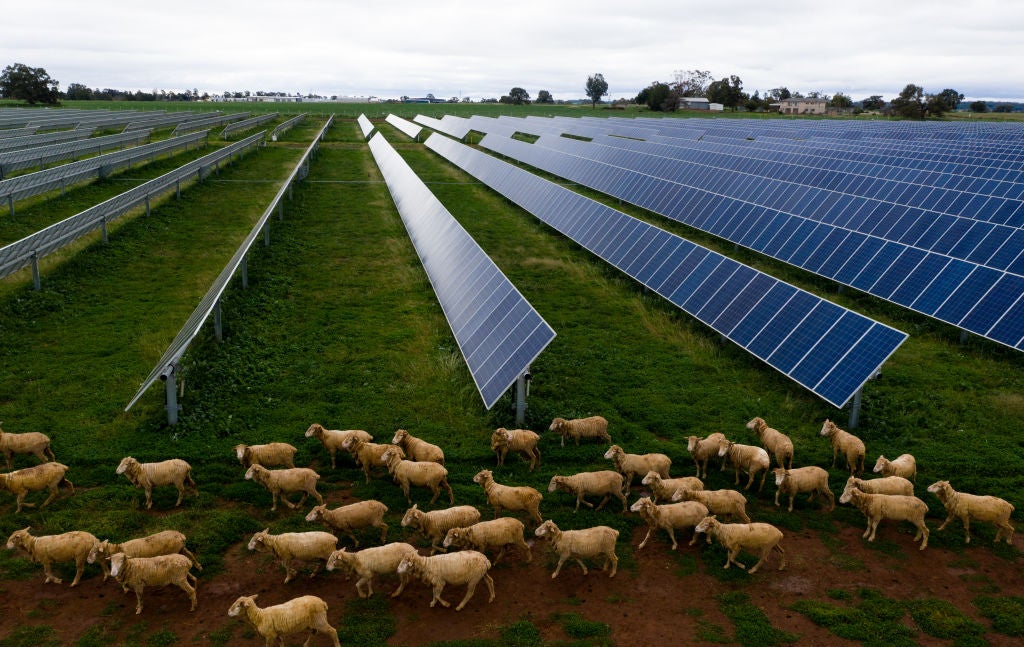Latest News

Agrivoltaics- The Innovative Way of Doing Agriculture
By Chinweokwu Mmaju
Picture this: you drive into a farm, and you see livestock milling around, the plants are swaying in the wind, and then up ahead, just ahead of the corn stalks, you see, oh wait, solar panels beside the rows of yam. Welcome to 2024, where farmers embrace Agrivoltaics.
The need for renewable energy in all aspects of life is at an all-time high, and its necessity for agriculture is no longer debatable. Considering that Agriculture is the sole source of food (for humans and even animals), it is a given that it is a daily vocation, especially in Africa. However, there is a heavy dependence on oil, gas, and coal for more than three-quarters of their power generation. However, the International Renewable Energy Agency (IRENA) predicted that Africa could meet nearly a quarter of its energy needs from indigenous and clean renewable energy by 2030.
In farms, the use of farm machines driven by fossil fuels has contributed to greenhouse gas emissions, which have aggravated global climate change. Moreover, the additional cost of running these mechanical operations in fuelling, maintenance, and operations is at an all-time high. However, with the shift to renewable energy, particularly solar power, the potential for significant cost savings is enormous. This transition, known as Agrivoltaics, not only offers a promising solution to the financial challenges many farming operations face but also instills a sense of optimism and financial savvy in the audience.
Agrivoltaics (AV) is the practice of combining water, energy, and agriculture. In simpler terms, it’s like turning your farm into a solar farm. The ‘Agri’ part refers to food production, and ‘voltaic’ is a term used to describe solar energy. It’s also known as agrisolar, low-impact solar, or agriphotovoltaics (APV). Essentially, it’s about using solar panels to provide energy for your farm while benefiting your crops and livestock.
The benefits of AV are enormous. For example, do you know that plants have a saturation point of sunshine? Yes, they sweat when they have had enough and even get thirsty, and then by making water tanks, taps, troughs, and hoses, incurring more expenses than should be expected. Hence, solar panels are placed strategically over the plants so that they have the right amount of sunlight and stay hydrated while charging the panels. Talk about a win-win situation. The same goes for livestock; the panels act as shields, allowing them to graze to their hearts’ content so that they stay hydrated and not sweat it all out.
 Photo credit: Photo credit: Janie Barrett/Sydney Morning Herald via Getty Images
Photo credit: Photo credit: Janie Barrett/Sydney Morning Herald via Getty Images
These practices are more prevalent in the United States than in Africa, and this is because of one thing- money. Solar panels can be expensive, and raising the money to buy and maintain them could be an overhead cost that the average African farmer cannot afford. However, the AFC team recently attended the launch of a solar energy company in Nigeria, GrouPower, a solar power provider based in Abuja, Nigeria. They leverage the power of communities and turn this into solar power farms placed within the neighbourhoods. One of their side attractions is the opportunity to spread payments so that the farmer or agripreneur, in this case, is manageable. Although new, their enthusiasm for empowering communities is infectious. However, hope abounds, given that agripreneurs can form corporative groups and clusters and contribute resources that can help mitigate the impacts of the cost of purchase and maintenance of the solar panels and other fees they can leverage to alleviate the financial pressures. Sounds like a good deal!
At this point, this should not even be a luxury as the cost of production increases daily with inflation, taxes, and country policies. Since farmers can reduce or completely eradicate greenhouse gas emissions, preserve water, and produce healthier crops, it is not just a reason but a responsibility to jump on this bandwagon. Don’t forget the additional perks of increased efficiency, reduction of operation costs, and saving the planet. Of course, there are concerns about installing this in farms, such as an animal chewing the panels or wire or even the time and resources it would take to deploy this machine. At this point, do the pros seem more than the cons, or is it vice versa?
It is a strong belief that farmers can use this renewable energy without breaking the bank. As suggested above, teamwork does make the dream work. They can come together to form cooperatives, fostering a sense of unity and cooperation. It would be awesome also if the various governments intervened by providing grants and subsidies to help ease the burden. Solar energy companies can also offer subsidised rates to entrepreneurs. Whatever the case, agripreneurs must consider this asset and carefully weigh the pros versus the cons. The potential for collaboration and government support should leave you feeling hopeful and encouraged.
Getting energy from the sun is a great natural source of power and a definite trend to encourage and amplify. As Africans, we must be creative in deploying innovative agriculture practices. The time is now.
Cover Photo: Unsplash







